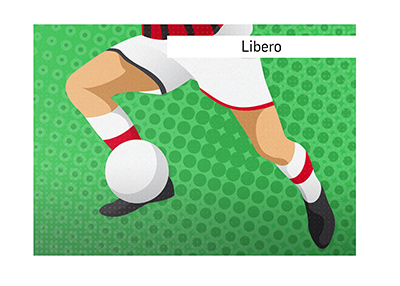Definition of Libero
Featured Offer
Football Betting
Turn £10 Into £30 in Free Bets
Just £10 to start • £30 paid as Free Bets
UK new customers • 18+ • Quick signup
✔ Trusted by millions of UK bettors
Claim £30 Free Bets
Use code THEKING during registration
Bonus Code:
THEKING
Open Account Offer. Bet £10 & Get £30 in Free Bets for new customers at bet365. Min deposit requirement. Free Bets are paid as Bet Credits and are available for use upon settlement of bets to value of qualifying deposit. Min odds, bet and payment method exclusions apply. Returns exclude Bet Credits stake. Time limits and T&Cs apply. Registration required. Bonus code THEKING can be used during registration, but does not change the offer amount in any way. 18+ only. Gamble responsibly.


 The libero position is widely credited to being created by Austrian manager Karl Rappan in the 1930s. However, it became famous for its use in Italy, where the name was created. Libero means 'free' and describes exactly what sort of defender plays in the role.
The libero position is widely credited to being created by Austrian manager Karl Rappan in the 1930s. However, it became famous for its use in Italy, where the name was created. Libero means 'free' and describes exactly what sort of defender plays in the role. 